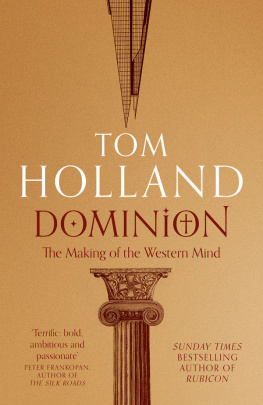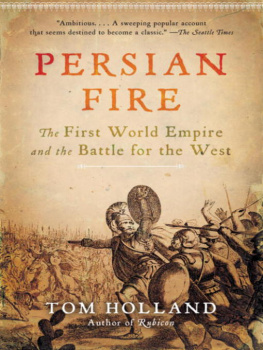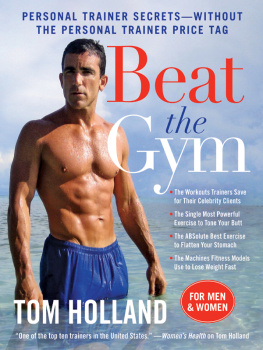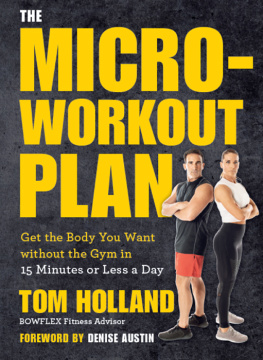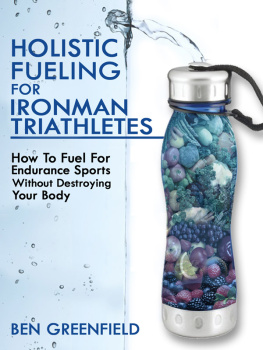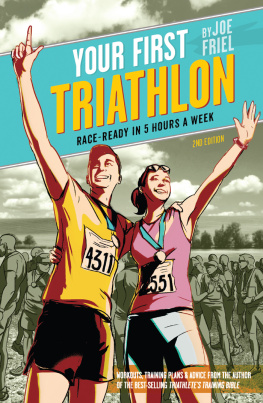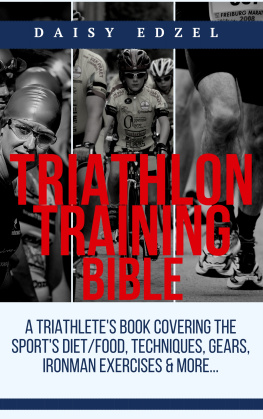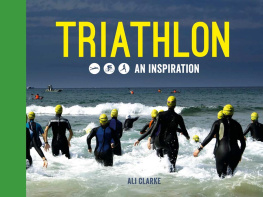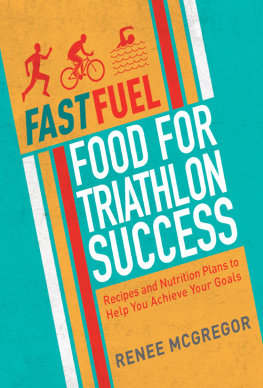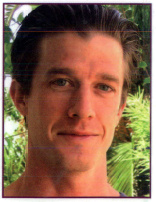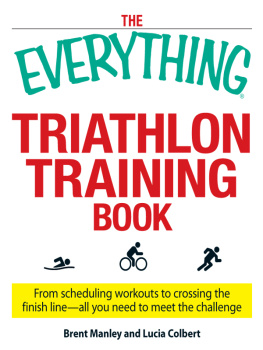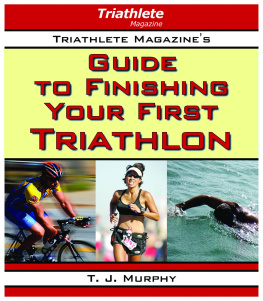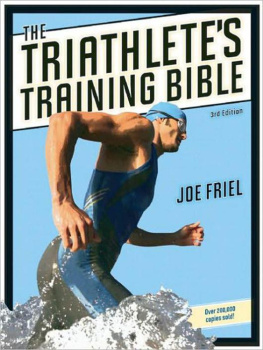Swim, Bike, RunEat
The Complete Guide to Fueling Your Triathlon
TOM HOLLAND, exercise physiologist and certified sports nutritionist, and AMY GOODSON, R.D., C.S.S.D., L.D.

Contents
Foreword
by Amy Goodson, R.D., C.S.S.D., L.D.
If you were going on a long trip, youd fill your car up with gas, right? So when taking your body on a long tripswimming, biking, and runningwhy wouldnt you fuel it up too?
One of the most common mistakes made by my triathlete clients is that they dont start thinking about nutrition until long after they begin training. Over time they realize they are always tired, they arent recovering adequately, they arent reaching their goals, and they cant figure out whats wrong. The answer? They forgot to put gas in their tank. No matter if the trip is long or short, it requires fuel and the better quality fuel you put in, the better performance you get out.
For most, nutrition seems daunting. It seems too difficult so they dont put much effort into it. They keep eating like they always have while they are asking for more from their bodies. The reality is nutrition is not that hard if you follow the basics and stay away from the fluff. Just because you read it in a magazine, saw it on the news, or heard about it at the gym doesnt mean its sound science and something you should necessarily follow.
When working with clients, new to the sport or training for a full Ironman, I recommend they live by the 80/20 Rule. Eighty percent of the time, focus on eating for health and performance, fueling the body so that it works the best it can. Twenty percent of the time you can eat for pleasure, meaning that you consume foods that might be higher in calories (fat and sugar) and lower in nutrition (protein, fiber, vitamins, and minerals). In other words, sometimes you can eat what you want, but just dont eat everything you want as that can really add up. Its important to remember that every food, including chocolate cake, can be included in a healthy diet, but the key is eating more nutrient-rich foods the majority of the time and limiting the others to every now and again.
Just like you plan your training (how many hours a week you will swim, bike, and run), you should also plan your nutrition (how many meals and snacks you should eat over the course of the day). Having a game plan or a training plan will ensure that you fuel your body adequately for the trip your body is taking that day or that week. Most people who exercise regularly (i.e., those that train heavily) need to be eating a variety of meals and snacks throughout the day, including pre-, during-, and post-workout snacks. You cant wait to fuel and hydrate until your car ride to the gym because at that point its too late. Its something you need to pay attention to from the time you wake up until the time you go to bed. Sound overwhelming? Its not if you make it a habit. Just like spending your Saturday morning biking for three hours followed by running an hour sounds pretty overwhelming to the average person, if you do it often, practice it and build up to it, its not that hard. It becomes habit.
Im sure youre wondering what to eat, when to eat, and how much of it to eat. Do you carb up or avoid carbs? Do you drink a sports drink during exercise or just water? Can chocolate milk actually help you recover or do you need a more traditional (i.e., gross tasting) recovery drink? Thats why were here. Swim, Bike, RunEat is designed to teach you the basics of sports nutrition and how to fuel your body, whether you are training for 30 minutes or for 5 hours and 30 minutes. If you want your car to work to the best of its ability, you give it the best fuel. You fill it up before it runs out of gas and take it for tune-ups regularly. Do the same with your body. Fuel it up with nutrient-rich fuel, hydrate it with the right liquids, and give it a tune-up each day after your training with recovery nutrition. Author Tom Holland, Ironman, trainer, and sports nutritionist and I, a sports dietitian, have years of experience working with the most elite and the most basic of triathletes. Together we have a solid base in science and can provide you with the tips, tricks, and recommendations that you need to fuel your body to perform at its most optimal level. Want to know how to be the best? Keep reading and well tell you how.
Wherever you train, plan ahead for hydration and nutrition.
Introduction
It was March of 1999. I was halfway around the world in beautiful Lake Taupo, New Zealand, about to take part in my first Ironman triathlon. I was a twenty-nine-year-old personal trainer who had just recently decided to make my passion my vocation, pursuing fitness as a full-time career.
The decision included drastically expanding both my education as well as experience within the fitness world, going back to school to get my masters degree in exercise science and sports psychology, taking numerous other fitness certifications, and seeking out new fitness challenges.
I knew nothing about triathlons when I signed up for the Ironman; heck, I hadnt ever owned a bike. There were only a handful of Ironman races at the time, nowhere near the number there are today, and I certainly didnt know anyone who had ever competed in this insane 140.6-mile (226.3 km) race. But I knew I needed a huge challenge, and it would be the hardest event I had ever taken part in.
It was scheduled for March 6, the day before I was to turn thirty. The rules stated that you had to finish by midnight to be official, and my goal was to run, walk, or crawl across that line before I entered the third decade of my life. The next morning, I would wake up an Ironman.
I tend to work backward in my goalsetting strategies. I signed up for the Ironman first and then I scheduled a few short local triathlons as preparation for the full. Go big or go home. There was very little information back in the late 1990s on how to train for a triathlon, much less an Ironman. Combine this with my being a little nave and a little cocky, and you have the perfect storm for disaster when it comes to competing in an endurance event. My training was nowhere near what it should have been, and I had no concept of fueling whatsoever.
I arrived in New Zealand a week in advance of race day. I soon became friendly with several athletes including two professionals. We were sitting at dinner a few nights before the Ironman when the conversation turned to what everyones race-day nutritional plans. When it came my turn to answer, it went something like this:
Pro Triathlete #1: So, Tom, what do you use on the bike?
Me: What do you mean?
Pro Triathlete #2: What does your bike nutrition look like? How many calories are you planning on taking in? Do you use gels, bars, or what?
Me: I have no idea what youre talking about.
The next day my newly acquired friends marched me into town and made me purchase a handful of nutritional products from a local drugstore, including a bottle of a thick, syrupy liquid that they told me was to be my main source of calories while riding the bike. (Today you would go to the expo to get these products; back then, the expos were infinitely smaller and did not offer the range of products they do today.) One pro then took me back to his room and gave me a few bottles of yet another type of strange drink, demanding that I start consuming them immediately. As I walked out, I noticed his hotel room was littered with a dozen or so empty bottles of the drink in my hands.



